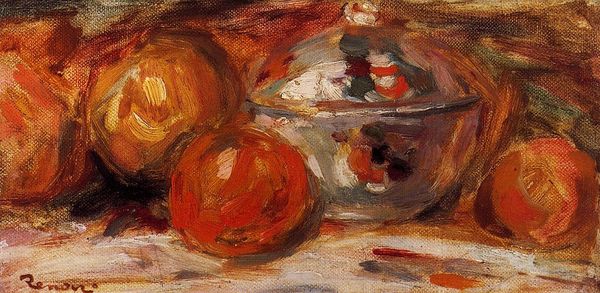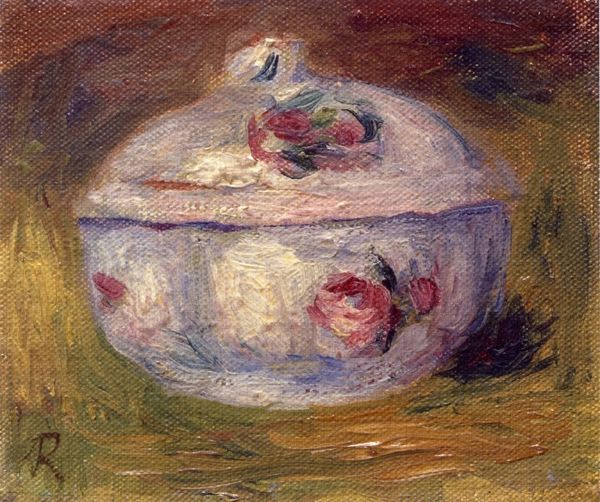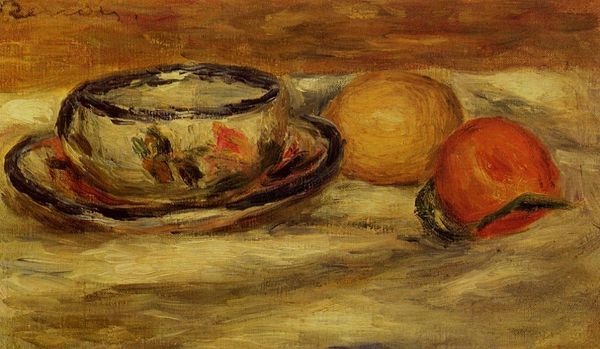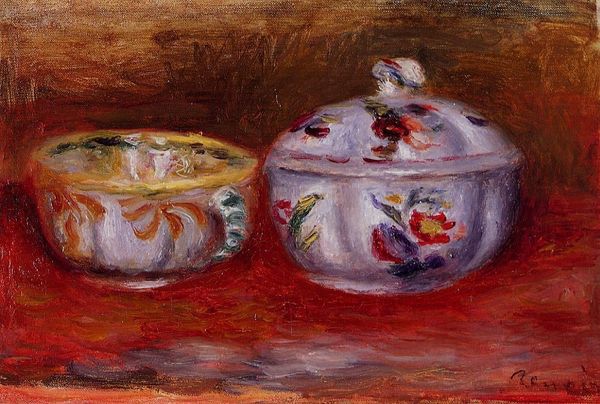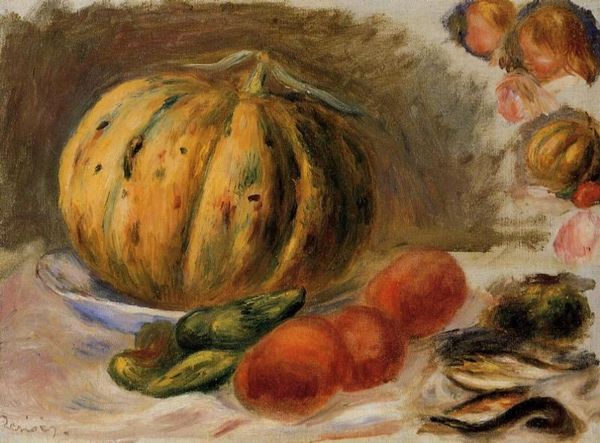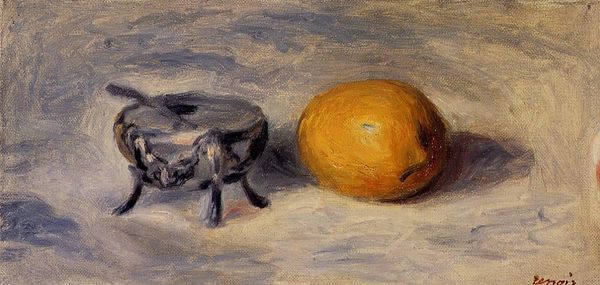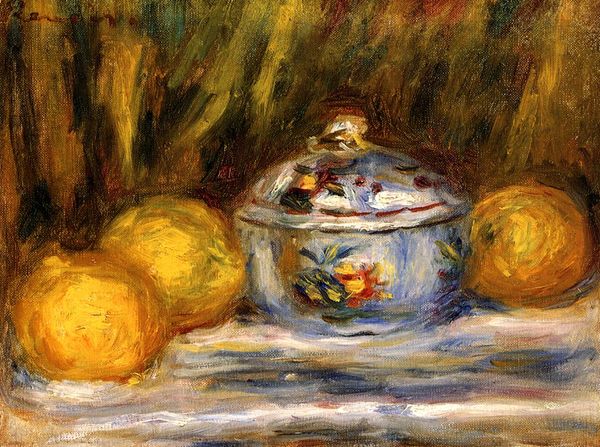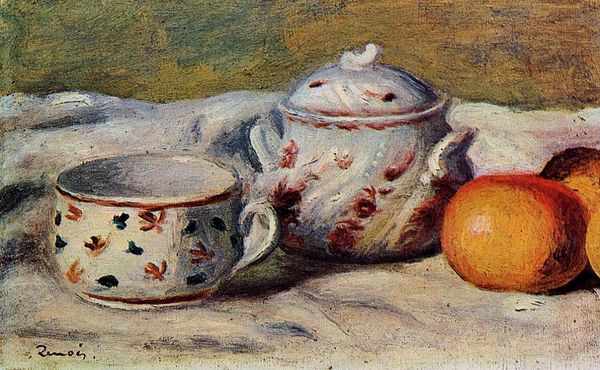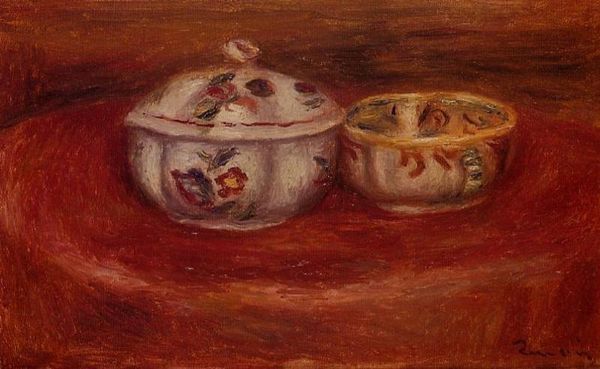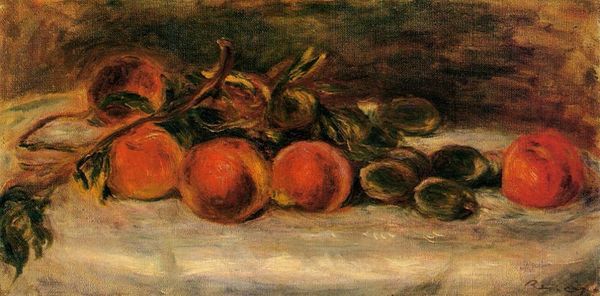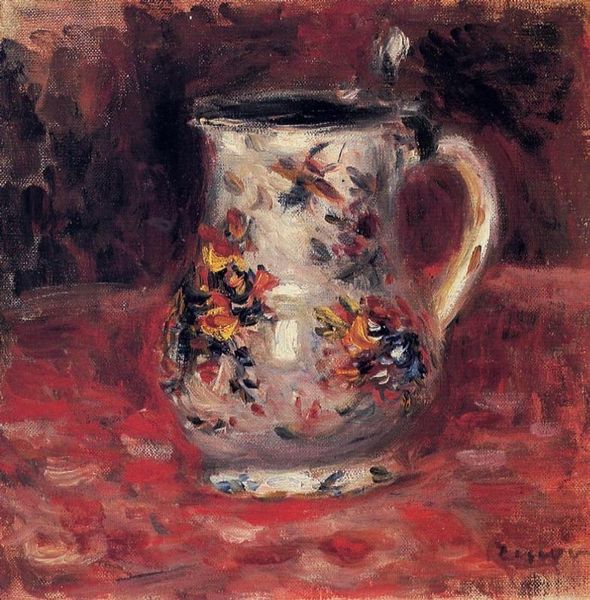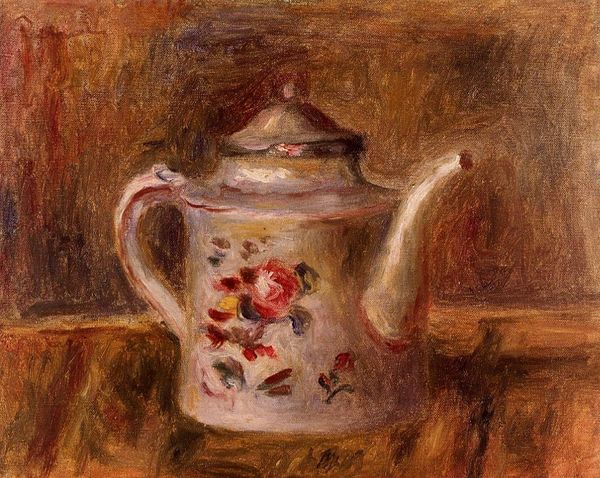
painting, oil-paint
#
painting
#
impressionism
#
oil-paint
#
oil painting
#
genre-painting
Copyright: Public domain
Curator: Well, the lighting immediately strikes me. There’s something so warm and inviting about this seemingly simple scene. Editor: Indeed. This is “Still Life with Orange and Sugar Bowl,” an oil painting by Pierre-Auguste Renoir, and it epitomizes his interest in capturing everyday life, focusing here on the bourgeoisie and their carefully chosen commodities. Curator: Commodification, yes, but what’s equally captivating is Renoir’s masterful rendering of materials – the glossy, almost reflective skin of the orange versus the smooth, painted surface of the sugar bowl. It speaks to a specific type of consumer culture and production. How does that ceramic become that perfect vessel in our lives? Editor: It does highlight access to these newly accessible goods, though, I'd argue it is more focused on the rise of still life as a display of affluence. Owning beautiful objects was, in itself, a status symbol displayed in domestic spaces for others to observe, influencing social standing. Curator: Certainly, but doesn't that reinforce how these crafted goods played a central role in shaping bourgeois identity? The material processes embedded in this culture became as signifiers. Editor: I suppose, in the context of burgeoning industrialization and evolving class structures, presenting yourself a certain way would hold new meaning in a shifting landscape of the old rules around inherited nobility. Look, I simply read Renoir's use of "genre painting" in a more general sense that is directly related to how the artist's status grew in French Salon society in this period. Curator: His fame as part of Impressionism led to many commissions and exhibitions for Renoir. Let’s consider how its current presence in a private collection affects this reception. A work intended to denote a public space now only accessible to a privileged few? Editor: Yes, exactly. The art market undeniably determines who gets to experience this. But that private display mimics its initial role. How different, really, is that consumerism now from the wealthy showing off beautiful objects on walls in gilded frames to a limited number of invitees back then? It continues to feed the same economic ecosystem! Curator: A haunting yet accurate observation. Editor: Ultimately, it seems these artworks have a lot more to reveal beyond just aesthetics. Thank you for allowing me to muse today.
Comments
No comments
Be the first to comment and join the conversation on the ultimate creative platform.
